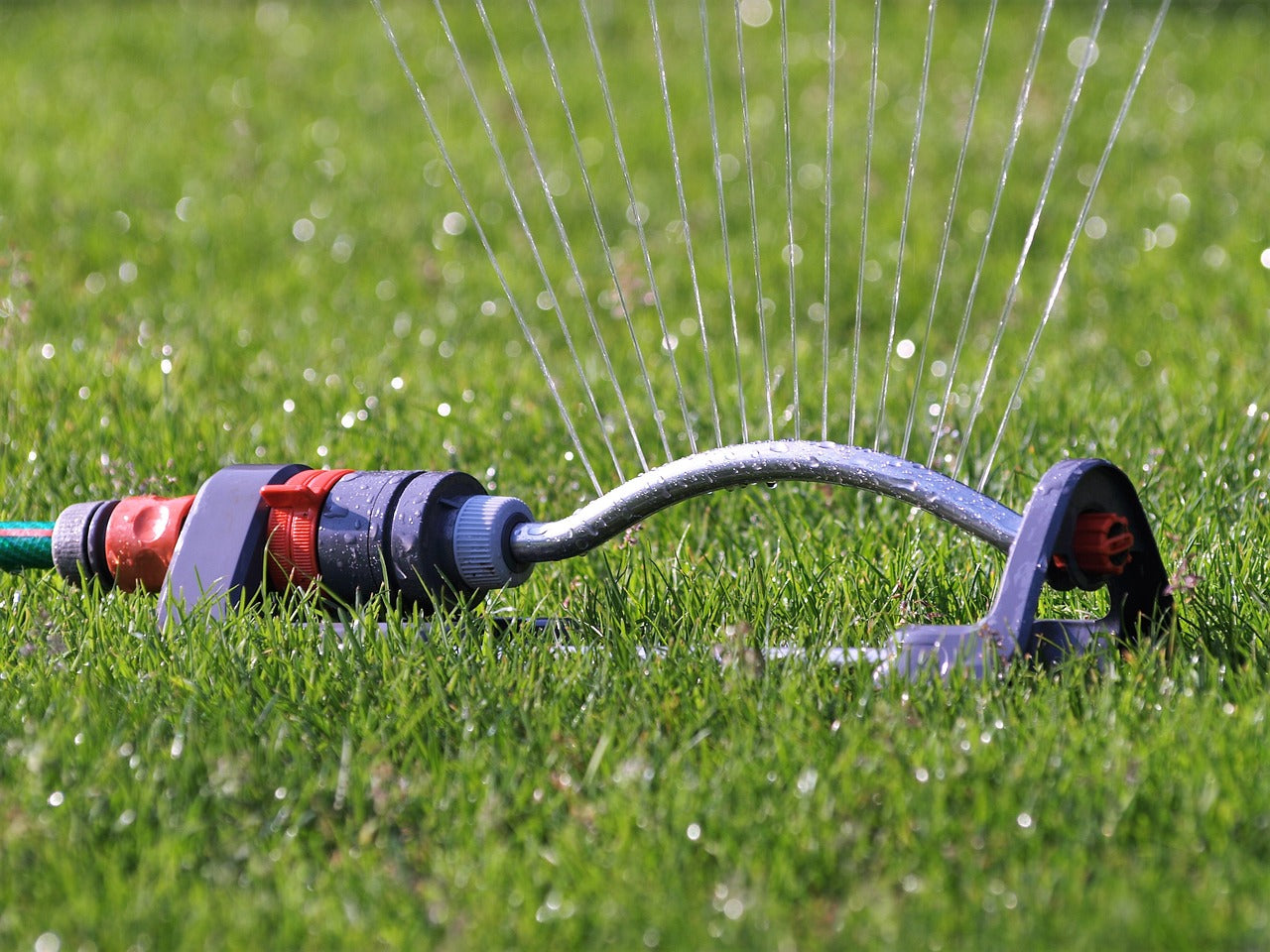
Best time to water the lawn
Mastering Lawn Care: The Optimal Time to Water Your Lawn
Welcome to our comprehensive guide on mastering lawn care, specifically focusing on the optimal time to water your lawn. Are you constantly questioning when the best time to water your lawn is? Or perhaps you're unsure about how your grass type and soil type can influence your watering schedule? If so, you're in the right place.
In this blog, we'll delve into the importance of watering your lawn, the impact of overwatering and underwatering, and the role of water in grass growth. We'll also explore how often and how long to water your lawn, taking into account your lawn's specific needs.
We aim to help you avoid common mistakes and provide you with practical tips to conserve water while maintaining a healthy lawn. So, whether you're a seasoned gardener or a complete novice, this blog will equip you with the knowledge you need to keep your lawn looking its best. Let's dive in!
Understanding the Importance of Watering Your Lawn
Watering your lawn is more than a routine task; it's an art that requires understanding and precision. The importance of this task lies in its impact on your lawn's health and appearance. Let's delve into this crucial aspect of lawn care.
Why Watering Your Lawn is Crucial
Watering your lawn is a fundamental aspect of lawn care. It's not just about keeping your grass green and lush. It plays a vital role in the overall health and growth of your grass.
Without adequate water, your lawn can become stressed, leading to a dull appearance and making it more susceptible to disease and pests.
Remember, water is the lifeblood of your lawn. It's the key ingredient that helps your grass absorb essential nutrients from the soil, ensuring it grows strong and healthy.
The Impact of Overwatering and Underwatering
Overwatering or underwatering your lawn can lead to a host of problems. When you overwater, the grass becomes susceptible to diseases and the roots may suffocate due to lack of oxygen.
On the other hand, underwatering can cause your lawn to dry out, making it more vulnerable to heat stress and drought.
Striking a balance between these two extremes is crucial for maintaining a healthy, vibrant lawn.
The Role of Water in Grass Growth
Water plays a pivotal role in the growth and development of your lawn. It's not just about keeping the grass green and lush. Water is a key component in the photosynthesis process, which is how grass converts sunlight into energy for growth.
Moreover, water helps in the transportation of essential nutrients from the soil to the grass roots. Without adequate water, these nutrients can't reach the roots, hindering the growth and development of your lawn.
Determining the Best Time to Water Your Lawn
Understanding when to water your lawn is crucial for its health and vitality. Let's delve into the pros and cons of morning, afternoon, and evening watering, and explore the factors that influence the optimal watering time.
Morning Watering: Pros and Cons
Watering your lawn in the morning has its own set of benefits and drawbacks. One of the biggest advantages is that the cooler temperatures and calm winds help the water to soak into the soil before it evaporates. This ensures your grass gets the hydration it needs to thrive throughout the day.
However, if you water too early, you might end up with a soggy lawn. This can lead to fungal diseases, as the excess moisture creates a breeding ground for fungi.
Afternoon and Evening Watering: Pros and Cons
Watering your lawn in the afternoon or evening has its own set of advantages and drawbacks.
One benefit is that it's often more convenient for homeowners who work during the day. However, the water may not be absorbed as efficiently due to higher evaporation rates in the heat of the afternoon.
Evening watering, while relaxing, may lead to lawn diseases due to prolonged moisture as the water doesn't have enough time to evaporate before nightfall.
Factors Influencing the Best Watering Time
The best time to water your lawn isn't set in stone. It's influenced by a few key factors. Firstly, the type of grass you have plays a role. Some grass types require more frequent watering, while others can survive with less.
Secondly, your local climate conditions also matter. In hotter, drier areas, you might need to water your lawn more often or even during different times of the day.
How Often and How Long to Water Your Lawn
Understanding the dynamics of watering your lawn is crucial for its health and vibrancy. This section will guide you on how often and how long to water your lawn, ensuring it gets the right amount of hydration.
Understanding Your Lawn's Water Needs
Your lawn's water needs can vary greatly depending on a number of factors. Things like the type of grass, the soil condition, and the local climate all play a part. Typically, a lawn needs 1 to 1.5 inches of water per week, either from rainfall or watering.
However, it's not just about the quantity, but also the timing. Watering in the early morning or late evening can help prevent water loss through evaporation.
Remember, overwatering can be just as harmful as underwatering. It's all about finding the right balance to keep your lawn healthy and vibrant.
Creating a Watering Schedule
Creating a watering schedule for your lawn is not as daunting as it might seem. Start by observing your lawn's reaction to different watering frequencies. Does it stay green and lush or does it start to yellow and wilt?
Next, consider the type of grass you have. Some varieties require more water than others.
Finally, take into account the local weather. During hot and dry periods, you may need to water more frequently. Conversely, in cooler or rainy seasons, you can reduce the watering frequency. Remember, the goal is to keep your lawn healthy and vibrant, not waterlogged.
Adjusting Watering Frequency and Duration
Your lawn's water needs can change over time, and it's important to adjust your watering frequency and duration accordingly. If the ground feels spongy or your feet sink in as you walk, you're likely watering too much. Similarly, a thatch of extra vegetation on your topsoil could indicate overwatering.
When it comes to adjusting your watering schedule, don't do it abruptly. A sudden change can shock your lawn and cause further damage. Instead, take a few weeks to gradually modify your watering frequency and duration. This will allow your lawn to adapt to the new watering regime without stress.
Remember, the goal is to strike a balance. Watering too frequently can drown your grass, while not watering enough can leave it parched. Keep an eye on your lawn's condition and adjust your watering schedule as needed to keep it lush and healthy.
Watering According to Grass and Soil Type
The health of your lawn is largely dependent on the type of grass and soil it has. Understanding these two factors can help you devise an effective watering strategy that promotes lush, green growth. Let's delve into how these elements influence your lawn's watering needs.
Watering Different Types of Grass
The type of grass you have plays a crucial role in determining the watering strategy. For instance, warm-season grasses like Bermuda and Zoysia are drought-resistant and require less water. On the other hand, cool-season grasses such as Ryegrass need more frequent watering.
Understanding your grass type is the first step towards a healthy lawn. It's not just about watering; it's about watering right.
Remember, overwatering can be as harmful as underwatering. So, get to know your grass and water it accordingly.
Understanding the Impact of Soil Type on Watering
The type of soil in your lawn plays a crucial role in watering. Sandy soils, for instance, drain quickly and require more frequent watering. On the other hand, clay soils retain water for longer, meaning you can water less often.
However, overwatering clay soil can lead to waterlogging, harming your grass. Therefore, understanding your soil type is key to developing an effective watering strategy.
Remember, it's not just about the amount of water you use, but also how and when you use it. Tailoring your watering approach to your soil type can help ensure your lawn stays healthy and lush.
Tailoring Your Watering Strategy to Your Lawn
Understanding the type of grass and soil in your garden is crucial in devising an effective watering strategy. Not all grass types require the same amount of water, and the soil type can significantly impact how water is absorbed and retained.
For instance, sandy soils tend to drain water quickly, requiring more frequent watering, while clay soils hold onto water longer, reducing the need for frequent watering.
By tailoring your watering strategy to your specific lawn conditions, you can ensure optimal grass health while conserving water and saving on your water bill.
Avoiding Common Mistakes When Watering Your Lawn
Avoiding common mistakes when watering your lawn is crucial for maintaining its health and vibrancy. Let's delve into the common pitfalls and how to sidestep them.
Mistake 1: Watering at the Wrong Time
One common mistake many homeowners make is watering their lawn at the wrong time. This is more crucial than you might think. Watering your lawn in the heat of the day can cause the water to evaporate before it has a chance to soak into the ground.
On the other hand, watering late at night can lead to the growth of mould and mildew. The best time to water your lawn is early in the morning, when the temperatures are cooler and the water has a chance to penetrate the soil before the heat of the day sets in.
Remember, timing is everything when it comes to lawn care. Avoid this mistake and you'll be one step closer to a lush, healthy lawn.
Mistake 2: Watering the Wrong Amount
Watering your lawn excessively or insufficiently is a common mistake many homeowners make. Overwatering can lead to waterlogged soil and root rot, while underwatering can leave your grass parched and weak. It's crucial to strike the right balance.
According to experts, most lawns need 1 to 1.5 inches of water per week. This can be measured using a simple rain gauge.
Remember, it's not just about the quantity, but also the frequency. It's better to water deeply and less frequently, allowing the water to penetrate the soil and reach the grass roots. This promotes stronger, healthier grass.
Mistake 3: Ignoring Your Grass’ Needs
Ignoring your grass' needs is a common mistake that can lead to a less than ideal lawn. Just like any other living organism, your lawn requires attention to stay healthy. If you notice signs of stress, like yellowing or browning, it's time to reassess your watering schedule.
Overwatered or underwatered grass tends to bounce back slower after mowing or walking on it. It's crucial to adjust your watering schedule based on the needs of your grass, rather than sticking to a rigid plan.
Remember, a healthy lawn is a happy lawn. So, keep an eye out for signs of distress and adjust your watering habits accordingly.
Conserving Water While Maintaining a Healthy Lawn
Balancing water conservation with lawn health can be a challenge. This section explores smart strategies, from irrigation systems to landscaping choices, that help conserve water while ensuring a lush, green lawn.
Smart Irrigation Systems
Smart irrigation systems are a game-changer in lawn care. These systems are designed to conserve water by providing the exact amount your lawn needs. No more, no less.
They work by using weather data and soil sensors. This means they adjust watering schedules based on real-time conditions.
FAQs about Watering Your Lawn
Navigating the world of lawn care can be tricky. This section aims to answer your most pressing questions about watering grass, from the effects of sun exposure to the ideal watering frequency.
Does watering grass in the sun burn it?
Watering grass in the sun is a common practice, but does it cause any harm? The answer is no. Contrary to popular belief, the droplets of water on the grass blades do not act as a magnifying glass and burn the grass.
However, watering in the midday sun is not the most efficient way to hydrate your lawn. A lot of the water can evaporate before it reaches the roots due to the heat.
So, while it won't burn your grass, it's best to water your lawn in the early morning or late evening for optimal absorption and minimal evaporation.
Should you water grass after mowing?
Watering your lawn after mowing is a common practice, but it's not always necessary. It's more about the condition of your lawn and the weather.
If your lawn is dry and the weather is hot, watering after mowing can help the grass recover. However, if your lawn is already well-hydrated, additional watering might not be needed.
Remember, the key is to keep your lawn healthy and not overwater it. It's all about balance!
How often should you water grass seed?
Watering grass seed is a delicate process, and the frequency depends on several factors. Generally, it's recommended to water grass seed at least twice a day. This keeps the top layer of soil, where the seeds are nestled, consistently moist and conducive for germination.
However, it's important to note that this isn't a one-size-fits-all rule. The watering frequency can vary depending on the type of grass, the climate, and the soil conditions. For instance, in warmer or drier periods, the grass seed may require more frequent watering.
Remember, the goal is not to drown the seeds but to provide a moist environment that encourages growth. So, while it's crucial to water regularly, avoid overwatering as it can lead to seed displacement or even seed rot.
How deep do grass roots grow?
The depth of grass roots can vary greatly, depending on the type of grass and how it's cared for. Many grass roots are located just a few inches beneath the surface. However, with time and proper care, some grass roots can extend as deep as 3 feet into the soil.
The key to encouraging deep root growth is infrequent, yet deep watering. This method encourages roots to grow downwards, resulting in a stronger, more resilient lawn.
So, while the depth of grass roots can vary, remember that your watering habits play a crucial role in determining just how deep those roots will grow.
Final Thoughts on Watering Your Lawn
In conclusion, mastering lawn care requires a keen understanding of the optimal time for watering your lawn. It's not just about keeping the grass green; it's about promoting healthy growth and conserving water. The best time to water your lawn is typically in the early morning, but this can vary depending on factors such as grass and soil type.
Avoiding common mistakes, like overwatering or watering at the wrong time, can significantly improve the health and appearance of your lawn. Remember, each lawn is unique and understanding its specific needs is crucial.
In the end, lawn care is more than just a chore; it's a science. By following these guidelines, you can ensure your lawn stays lush and healthy all year round. After all, a well-cared-for lawn is a beautiful sight to behold.
Ready to be proud of your garden?
Ensure your lawn never goes hungry with our personalised feeding plan. Delivered through you letterbox exactly when you need it.












